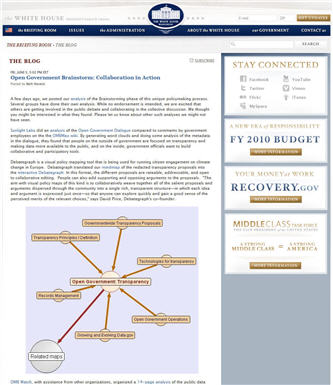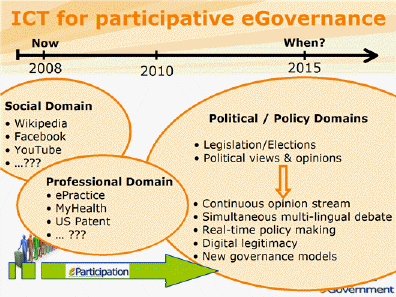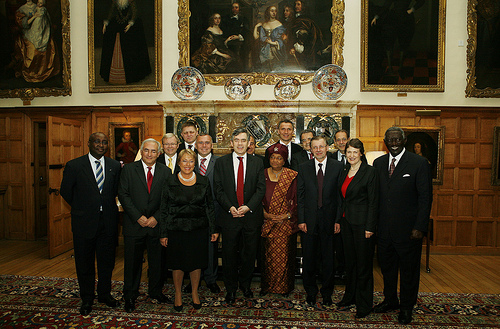Paul Johnston wrote a characteristically thoughtful and constructive post last month on the need for public authorities to open up debates on public issues to genuine citizen engagement and influence.
Prior to the post, Paul and William Heath catalysed a debate map on the government’s plans for a new Identity System in the UK; a snapshot of which is shown below. Reflecting on the process, Paul provided an excellent précis of our public policy objectives for Debategraph:
“David believes that as more experts engage with the map, its quality and accuracy will steadily improve, so that even newcomers to the debate will quickly be able to see what parts of the debate are most important and where the real differences lie. The tool anyway has a capacity for people to rate elements of the argument, so there is also scope in this way for the wisdom of the crowds to shape the debate. So for David (if I have understood him correctly) the key issue is to go beyond the superficial yes vs. no of much political debate and provide a map that really captures an argument in all its complexity and sophistication. For him (I think) a map needs to be fairly detailed if it is to be genuinely enlightening and so make a real contribution. And Web 2.0 enables this because a wide range of true experts can engage and so allow the real substance of an argument to emerge.”
It’s a lucid summary, to which I would add:
(1) Debate maps aim to capture succinctly and in context every argument that anyone thinks is pertinent to a debate. The complexity of a map mirrors the complexity of the relevant issues as perceived by the community of mappers. Simple issues produce simple maps: complex issue produce complex maps.
(2) Many of the issues that we face in the 21st Century are intrinsically complex. And we can either ignore or deny this complexity and hope for the best, or seek to understand and deal with it. Debate maps give us a means to understand this complexity by letting us to capture and explore it at our own pace.
(3) Debate maps strip away the extrinsic complexity of public debates—the cacophony of partial arguments repeated in ever-louder voices—that can bedevil attempts to deal with the underlying complexity of a debate. Once an argument is represented on a debate map, people can focus on improving and responding to it rather than repeating it.
(4) Debate maps grow to maturity through iterative community interaction: capturing, responding to, clarifying, distilling, rating and reorganising the arguments into as rigorous, concise and comprehensive a structure as possible. Expert input is a vital part of this process, but, from the perspective of the map, the definition of an expert is simply anyone who has something novel and pertinent to add to the debate.
In his post Paul proceeds to outline a 5-stage template model that he suggests could be applied to complex political debates to help participants to get to the essence of the debate and of the different views within the debate. It’s a stimulating proposal that merits detailed reflection. From my perspective, the distillation and clarity that Paul is quite rightly striving for here, will naturally occur with maturing debate maps; as the focus of activity shifts from gathering and articulating the arguments and options to sifting and choosing from the arguments and options.
A further characteristic of debate maps is that they provide open spaces in which debates can evolve to find their own form, as new issues and options emerge. Hence, the boundaries of debate maps are not fixed by government-centric frames—a potential concern Martin Stewart-Weeks raises with respect to the templates—but are discovered and defined by the participants in the process of building the map. This is important because, as Martin notes:
“Part of the citizen engagement debate is about expanding the capacity for people and organisations to not only be the ones being consulted about the government’s agenda, but to be able to determine, at least to some extent, what the agenda should be in the first place.”
The open process of exploration on a map also frees participants from the need to adopt and defend fixed positions in the debate from the outset; keeping open the possibility that previously hidden but ultimately more attractive options will be identified. It also reduces the risk of premature distillation of the issues into a superficially attractive but fundamentally flawed policy position.
The belated publication this month of the Crosby report—which reframes the ID debate in an imaginative and potentially generative way—highlights the structural weaknesses of the current policy making process. An initial exploratory mapping process might have brought the arguments the report makes to the surface of the debate sooner. Conjecture, perhaps, but there are few less visible places for an argument to reside than in a drawer in Whitehall.
The transparency and openness to arguments from all sides that debate maps embody and encourage are surely vital components of any serious project to rebuild public trust in the policy making process. An issue that William Heath reflects on elsewhere.
And the transparency works both ways; as debate maps bring the trade-offs involved in political choices into sharper focus for the people making the policy demands as well as those making the decisions. And constructive engagement with these trade-offs is essential on both sides of the decision, as Matthew Taylor has argued eloquently at length.
Debate maps aren’t predicated on an assumption of underlying consensus—although if consensus is there to be found they will assist in its discovery—and debate maps don’t remove the burden of contentious decisions from Government. They merely strive to ensure that those contentious decisions are made in full cognisance of all the arguments that the community can muster, and that the Government provides an open and clear rationale for its decision in the context of those arguments.
As Paul notes in closing his post:
“Anyway, I think this is a really interesting field and I would love to see some public authorities embracing it and experimenting!”

![Reblog this post [with Zemanta]](https://img.zemanta.com/reblog_e.png?x-id=c96fd920-9824-4bd0-9a88-895db173720b)





